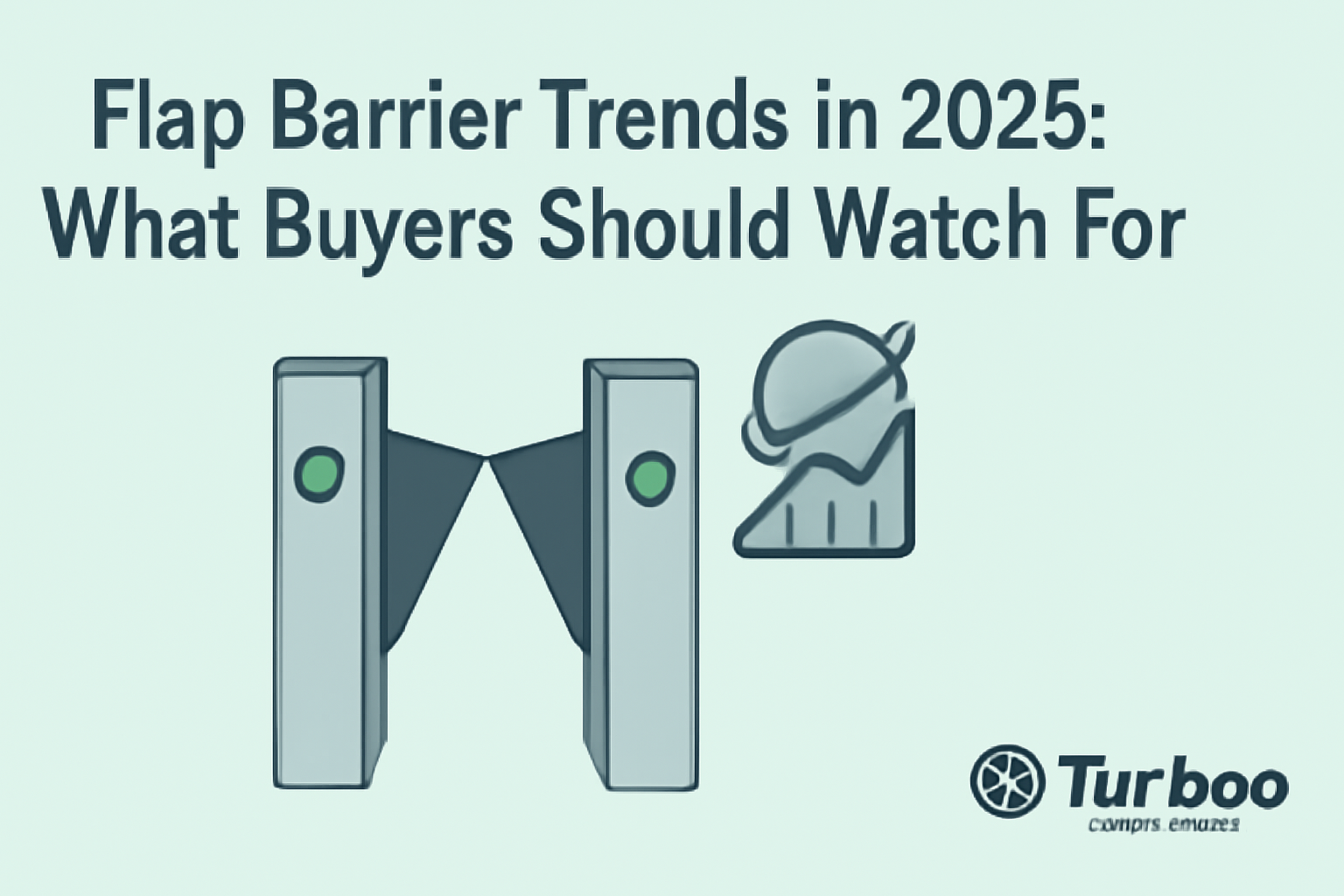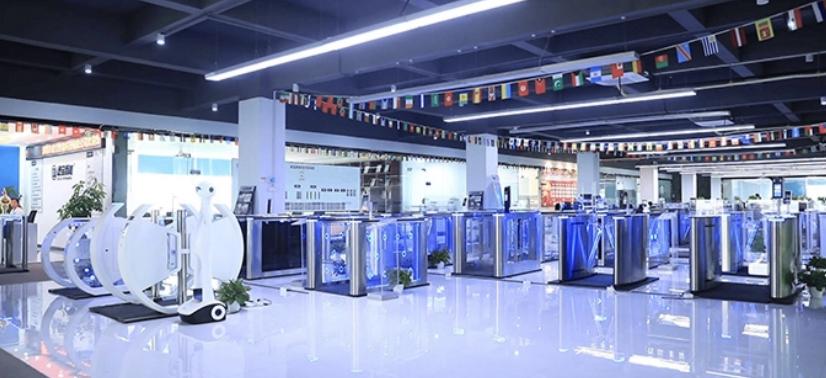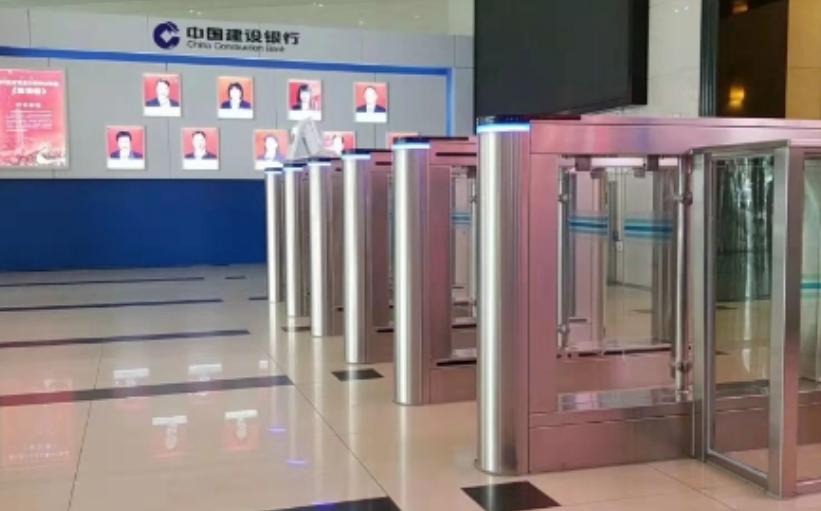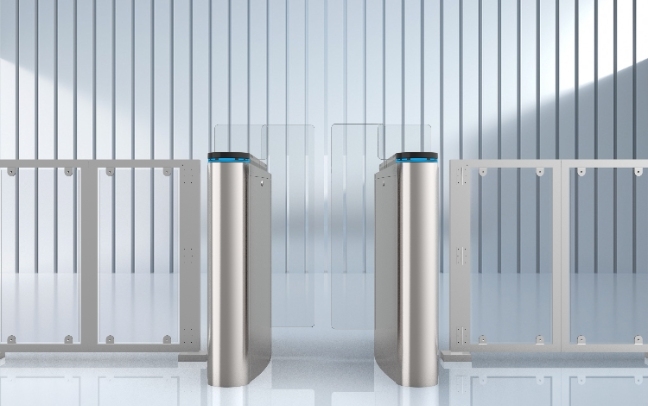Flap Barrier Trends in 2025: What Buyers Should Watch For


Security access points are no longer just about opening and closing gates. In 2025, flap barriers have become intelligent entry solutions—capable of handling biometric scans, mobile integration, and real-time data reporting. Facility managers and procurement leaders must stay ahead of these changes to make informed investments that serve long-term operational goals.
Whether you’re upgrading an older system or designing a new facility from scratch, understanding the latest flap barrier trends can help you select solutions that offer not only improved access control but also better safety, energy efficiency, and cost control. This article breaks down the top developments shaping the market in 2025 and gives you practical insights for evaluating your next purchase.
Why Tracking Flap Barrier Trends Matters
Evolving Security Needs and User Expectations
In today’s security environment, people expect fast, touch-free access that feels effortless—but delivers strong protection behind the scenes. From high-rise office lobbies to metro stations, facilities must manage thousands of users daily without compromising safety. Buyers need systems that can quickly adapt to changing conditions, including health compliance requirements and user flow adjustments. This is why tracking new flap barrier technology is essential.
For example, the pandemic years taught many organizations the importance of touchless entry and hygiene-friendly systems. As a result, features like contactless facial recognition and mobile QR scanning have become the new normal. Buyers who stay updated can implement these features from day one—rather than scrambling for upgrades later.
Long-Term Value and Reduced Operational Risk
Choosing the right flap barrier in 2025 isn’t just about new gadgets—it’s about choosing systems that deliver value over time. Innovative systems now offer remote maintenance, energy-efficient operation, and integration with security software. This helps reduce long-term operational costs, minimizes downtime, and limits the need for frequent repairs.
Additionally, selecting barriers that align with future tech standards ensures your system won’t become obsolete in just a few years. Whether it’s API compatibility with cloud-based access platforms or modular hardware for part replacement, modern systems are built for the long haul. Buyers who consider these factors now will avoid premature upgrades and hidden lifecycle costs later.
Staying Compatible with Access Control Trends
Flap barriers don’t exist in a vacuum—they are part of a much larger building ecosystem. In 2025, integration with video surveillance, alarm systems, and HVAC controls is more common than ever. These integrations improve security and operations, but they only work if your flap barrier supports them.
Buyers should also keep in mind that trends like biometric authentication and smart security features from major research firms like Deloitte are gaining ground globally. Systems that don’t support these capabilities could quickly become outdated, especially in commercial and government settings. Choosing products aligned with access control trends from sources like SecurityInfoWatch helps ensure you’re investing in technology that’s relevant—and scalable.
Rise of Smart Security Features
AI-Assisted Access Control
Artificial Intelligence is playing a growing role in flap barrier trends for 2025. Advanced systems now include AI-driven algorithms that detect behavior anomalies, monitor usage patterns, and make real-time decisions based on environmental input. For example, if a person hesitates too long at the gate or exhibits suspicious motion, the barrier can delay entry or alert security.
AI also enhances efficiency. It can prioritize faster lane allocation in high-traffic periods and learn common user behaviors to reduce false alarms. With predictive learning, the barrier can adjust its flap speed or detection sensitivity based on historical data—creating a smoother experience while keeping safety intact.
This AI integration is a game changer for facilities with heavy foot traffic or complex security needs. It reduces the burden on human staff while improving response accuracy in fast-paced environments like metro stations, airports, and corporate headquarters.
Mobile Credential Integration
Another defining feature in 2025 is the increased use of mobile access. Instead of physical cards or keys, users authenticate using smartphones, smartwatches, or wearables. QR codes, NFC (Near Field Communication), and Bluetooth-enabled badges allow for seamless, touchless entry.
Mobile integration isn’t just a convenience—it’s a strategic advantage. Facilities can issue, revoke, or modify access in real-time through a centralized platform. This helps with temporary access for visitors, contract workers, or new employees. It also means no more reissuing lost cards, which saves both time and money.
From a user standpoint, mobile credentials are faster, cleaner, and easier to manage. And since they can work alongside traditional methods, facilities can gradually migrate toward mobile-first systems without full replacements.
Touchless and Contactless Entry Systems
Hygiene and speed remain a top priority. The newest flap barrier innovations feature true touchless operation. Instead of pressing buttons or swiping cards, users can wave their hand, scan their face, or simply walk past a motion reader. Sensors detect movement and authenticate credentials automatically, reducing the spread of germs and making access more accessible for all users.
Touchless entry also improves traffic flow, especially during busy hours. There’s no fumbling with access cards or asking for assistance. Everything is seamless. This trend is particularly beneficial for hospitals, labs, and high-volume commercial buildings, where every second counts and cleanliness matters.
IoT-Connected Barriers and Data Analytics
Real-Time Monitoring Across Facilities
In 2025, IoT (Internet of Things) is no longer a futuristic concept—it’s a standard in smart security. Flap barriers now come with built-in connectivity that allows security teams to monitor multiple gates across different buildings from a single dashboard. Real-time updates show who entered, at what time, and through which gate.
This kind of centralized control is essential for large organizations, campuses, or government buildings. It improves visibility and makes it easier to respond to incidents instantly. No more walking to the unit or waiting for logs to download—everything updates live.
Access Data for Operations and Security
IoT also means more useful data. Every time a user passes through a gate, the system logs their access in the cloud. That information can be used for a range of operational benefits: identifying bottlenecks, adjusting cleaning schedules, or planning shift changes based on real traffic patterns.
From a security standpoint, analytics tools can highlight unusual access attempts, detect repeated failed entries, and help enforce zone restrictions. This data becomes a critical asset in investigations, audits, or compliance checks—adding a layer of accountability to every access point.
Remote Diagnostics and Alert Systems
With IoT comes another major benefit: remote troubleshooting. When a barrier malfunctions, your team no longer has to wait for a technician to arrive. The system can run a diagnostic test remotely and send the results to the maintenance team or vendor.
Alerts are also smarter. Instead of generic “error” messages, the system now notifies you of the exact issue—whether it’s a sensor fault, flap jam, or power failure. This speeds up repairs and helps you resolve issues before they escalate. It’s a major step forward in reducing downtime and maintaining continuous access flow.
Enhanced Biometric Authentication Options
Facial Recognition at the Gate
Facial recognition has become a cornerstone of flap barrier innovation in 2025. High-resolution cameras paired with AI algorithms allow gates to verify a user’s identity in under a second. These systems can operate in various lighting conditions, recognize individuals with masks or glasses, and match faces to access permissions stored in encrypted databases.
This advancement is a game changer in places where high throughput and strict access control are required—such as government buildings, financial institutions, and research labs. It reduces dependency on ID cards or badges, minimizing the risk of identity theft, badge sharing, or loss.
Privacy is also a major consideration. New systems are built with GDPR-compliant data handling and encrypted storage, ensuring user identities are protected. Facilities can now implement strong biometric security without compromising user rights or data integrity.
Fingerprint and Vein Scanners
Though facial recognition is on the rise, fingerprint and palm vein scanning remain relevant, especially in environments where facial visibility may be compromised—such as outdoor or construction areas. These biometric methods have improved in speed and hygiene, with sensors now supporting touchless reading via infrared imaging.
Modern sensors can identify users even if their hands are dusty or wet, increasing reliability in harsh conditions. Many organizations use dual authentication, combining fingerprint scans with facial recognition or mobile credentials to heighten security. This layered approach is especially valuable in high-risk areas like server rooms or secure storage units.
Hygienic Contactless Authentication
Post-pandemic, hygiene remains a top priority. Contactless biometric solutions offer both safety and convenience. Infrared-based facial and palm recognition technologies allow full identification without physical contact. These systems can also function in tandem with temperature screening or health status checks, especially useful in healthcare and food production sectors.
This shift toward smart security ensures user safety without sacrificing speed or accuracy. It also reduces wear on the flap barrier’s physical components, contributing to longer hardware lifespans and fewer maintenance calls.
Energy-Efficient Designs and Sustainable Materials
Low-Power Operation and Sleep Modes
Flap barriers in 2025 are built with energy efficiency in mind. Advanced motor systems now use low-voltage circuits and standby modes that reduce energy draw during idle times. For example, when no one is nearby, the barrier enters a power-saving state, activating only when motion or access credentials are detected.
This approach significantly lowers energy consumption, especially in facilities with 24/7 operation. It’s a small change with a big impact—helping reduce power bills while supporting environmental sustainability goals.
Use of Eco-Friendly Housing and Parts
Another trend is the use of recyclable or environmentally safe materials. Stainless steel remains the dominant choice for durability, but many manufacturers now use recycled alloys and BPA-free plastics. Powder coatings have replaced traditional paint for added resistance and reduced toxicity.
These materials not only last longer but also align with corporate sustainability efforts and building certifications like LEED. This makes a difference for companies with green policies or those required to meet environmental compliance standards.
Recycling-Friendly Component Design
New barrier designs also consider end-of-life value. Systems are now engineered with modular, recyclable components. When a motor, sensor, or flap wears out, it can be swapped individually—reducing electronic waste and repair costs.
This design makes it easier to maintain the system and responsibly recycle old parts. Procurement teams should look for vendors that support take-back programs or provide documentation for recycling and disposal, making environmental stewardship part of the overall security solution.
Building Management and Security Integration
Linking with Building Management Systems (BMS)
In 2025, flap barriers no longer operate as isolated units. They’re part of a larger web of smart building systems. Integration with BMS platforms allows facilities to link their access control with HVAC, lighting, elevators, and surveillance systems.
For example, when a person enters through a flap barrier, their presence can trigger air conditioning in their workspace or alert elevator systems to prepare for their floor. This integration improves both security and building efficiency by responding to real-time usage patterns.
Unified Control with Video Surveillance and Alarms
Modern barriers also integrate with video surveillance and alarm systems. When a breach or tailgating attempt is detected, the barrier triggers CCTV to record the event and send footage to security staff. In more advanced setups, AI-enhanced systems can match video footage with access credentials to verify user identity.
Alarm systems can also be triggered directly by the barrier—if it’s tampered with, opened forcefully, or used by unauthorized personnel. This unified response ensures no access event goes unmonitored, creating a more responsive and secure environment.
Standards for Secure API Connectivity
To support these integrations, manufacturers now offer open and secure APIs (Application Programming Interfaces). These allow flap barriers to communicate easily with other platforms, including cloud-based dashboards, access control databases, and facility management tools.
Buyers should ensure that their chosen system complies with modern API standards, uses encrypted communication, and supports future integrations. This is key for organizations planning digital upgrades or scaling security across multiple locations.
Safety Enhancements for 2025 Installations
Advanced Anti-Tailgating Logic
Tailgating—when an unauthorized person slips through a gate behind someone else—has long been a security challenge. In 2025, flap barrier systems now feature advanced anti-tailgating capabilities. With high-resolution infrared or laser sensors, the system detects more than one individual entering per authorized access and stops the flaps immediately or sends alerts to security.
This functionality is especially valuable in corporate buildings, research centers, and restricted zones. The system distinguishes between people and objects, adapts to varying user speeds, and even detects piggybacking attempts involving tight spacing between two individuals.
Facilities looking for tight access control should prioritize this trend when reviewing new barrier models.
Improved Emergency Exit and Release Options
Emergency preparedness is another critical area in flap barrier design. New systems now feature smarter fail-safe mechanisms. When triggered by fire alarms, evacuation drills, or power outages, the flaps either fully retract or swing open to allow free passage without delay.
Some models include manual override keys and remote-control functionality from central command rooms. These features are built to meet global life-safety codes and ensure safe, swift egress during emergencies—reducing liability for facility managers and improving occupant confidence in safety procedures.
Sensor Accuracy for Diverse User Groups
Inclusion and safety go hand in hand. The newest flap barrier trends ensure accurate operation for all types of users—whether elderly, children, individuals with disabilities, or those carrying bags or wheelchairs. Enhanced motion sensors now detect more subtle movements, varying speeds, and atypical approaches.
This increased sensitivity prevents unintentional flaps closing on slower-moving users, reducing injury risk and making systems more accessible. Buyers should ask vendors how their systems accommodate ADA compliance and multi-user lane management, especially in public facilities like hospitals and universities.
Customization and Aesthetic Trends
Color, Material, and Finish Options
Gone are the days of generic silver turnstiles. In 2025, buyers can choose from a wide range of finishes—matte black, brushed bronze, gloss white, or even wood veneer. These options help align security hardware with interior design themes or brand identity.
Materials have also evolved. In addition to traditional stainless steel, many models now offer glass or acrylic flaps, giving a more transparent and premium look. This makes them ideal for upscale venues like hotels, museums, and corporate lobbies where appearance matters as much as functionality.
Lane Widths and ADA Compliance
Customization isn’t only visual. Facilities now prioritize adaptive lane widths, including wider lanes for wheelchair access or high-traffic double-door models. Buyers can request configurable setups with multiple widths, speed profiles, and flap motion types—tailoring each installation to its user base and traffic density.
This flexibility ensures compliance with legal requirements and enhances user comfort across a wide spectrum of applications. It also simplifies design for architects and planners, enabling better space utilization in new or retrofitted buildings.
Brand Aligned Styling for Lobbies and Public Spaces
Corporate and public institutions increasingly seek branding consistency. Modern flap barrier models support custom logos, LED lighting accents in brand colors, and touchscreen welcome displays. These design-forward options turn security infrastructure into part of the facility’s identity.
When buyers factor branding into their procurement strategy, they not only maintain design cohesion but also improve the perception of security. A polished, high-tech gate conveys professionalism and control—a subtle yet powerful message to employees and visitors alike.
Procurement Strategy and Budget Planning
Prioritizing Feature Sets for ROI
Procurement teams must balance innovation with cost. The key is prioritizing features that deliver clear value. For example, IoT connectivity and mobile integration reduce future upgrade needs. Energy-saving motors lower operational costs year-round. Predictive maintenance prevents unplanned downtime.
By focusing on features with measurable ROI, buyers ensure their investment pays off. It’s no longer just about upfront cost—it’s about lifecycle efficiency and long-term benefit.
Phased Upgrades vs. Full Replacements
If budget is a concern, phased upgrades are a smart approach. Many 2025 flap barrier systems are modular and compatible with legacy infrastructure. This allows buyers to replace critical lanes first—like the main entrance—while planning future installations across other parts of the facility.
Start with units that serve the most people or areas where security risks are highest. Then, spread the upgrade over time as budgets allow. Vendors often offer scalable solutions that expand without requiring full system overhauls.
Total Cost of Ownership vs. Upfront Price
A cheaper unit might seem like a bargain—but it may lack essential features, consume more energy, or require frequent repairs. When assessing options, buyers should consider Total Cost of Ownership (TCO). This includes installation, energy use, maintenance, software licensing, and training costs.
Choosing quality from the start reduces hidden expenses. Buyers should also evaluate vendor service agreements and future software support to avoid being locked into outdated systems or high upgrade fees.
Real-World Examples of These Trends in Action
Smart Offices Using Facial Access and Analytics
An IT firm in Singapore recently upgraded its lobby with flap barriers featuring facial recognition and cloud-based analytics. Employees gain entry in under two seconds, and the security team tracks occupancy in real time. They use this data to manage shifts and reduce elevator bottlenecks during peak times.
Hotels Using Mobile Credentials and BMS Integration
A luxury hotel in Dubai adopted mobile credential systems at entrances, elevators, and VIP zones. The barriers are connected to the BMS, adjusting room climate automatically when guests enter the property. This creates a seamless check-in experience while maintaining high security.
Airports Leveraging Anti-Tailgate Sensors and Remote Monitoring
At a European international airport, advanced flap barriers now include anti-tailgating detection and IoT dashboards. Security staff monitor barrier status across terminals from a single control room, reducing response times to just minutes during breaches or malfunctions.
Resources for Buyers to Learn More
Stay informed by reviewing current innovation updates from Turboo Turnstile, or explore the latest in future tech to compare vendors and plan system upgrades.
For broader insights on access control trends, consult industry reports and security publications. You can also follow Deloitte’s smart security coverage for strategic planning in larger organizations.
Conclusion & Final Thoughts
Flap barriers in 2025 are smarter, safer, and more connected than ever before. From biometric authentication and IoT dashboards to energy-efficient designs and brand-aligned aesthetics, the technology has matured into a central component of any modern access control strategy.
Buyers who understand these flap barrier trends can confidently choose systems that align with both current needs and future challenges. By factoring in integration, customization, and operational efficiency, you ensure your investment continues to deliver long after installation.
Ready to plan your next purchase? Don’t just look at specs—look at long-term impact.
FAQs
1. What makes flap barrier trends in 2025 different?
Greater focus on IoT integration, biometric security, and energy efficiency distinguish the 2025 landscape from earlier models.
2. Is biometric access necessary or optional?
It’s optional but highly recommended for enhanced security and hygiene, especially in sensitive or high-traffic environments.
3. How does IoT integration affect system security?
IoT-connected barriers enable remote monitoring and faster diagnostics but must use encrypted protocols to remain secure.
4. Are energy-saving barriers worth the investment?
Yes. Over time, they reduce operating costs and extend equipment life, improving total ROI.
5. What should I ask a vendor about future-proofing?
Ask about API compatibility, modular design, cloud update support, and whether the system integrates with building management software.












